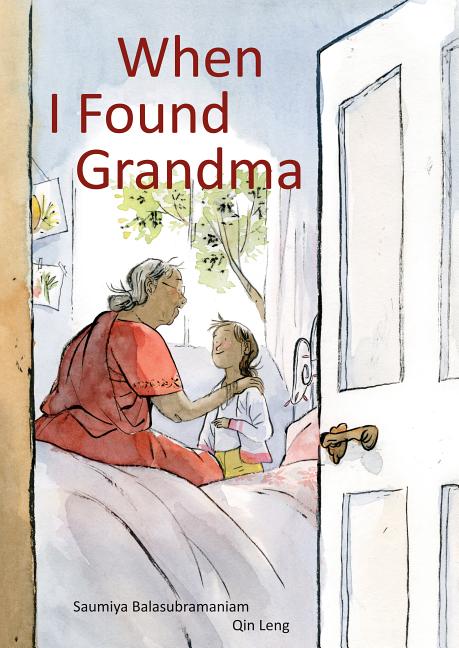Book Description
for When I Found Grandma by Saumiya Balasubramaniam and Qin Leng
From the Publisher
Maya longs to see her grandmother, but when Grandma arrives from far away for a visit, she is not quite what Maya expected.
When Maya's grandma makes a surprise visit from thousands of miles away, Maya is delighted. But her excitement doesn't last long. When Grandma picks her up from school, she wears fancy clothes and talks too loudly. Grandma's morning prayer bells wake Maya up, and she cooks with ingredients Maya doesn't usually eat. Plus, Maya thinks cupcakes taste better than Grandma's homemade sweets.
Maya and Grandma try to compromise, and on a special trip to the island Grandma even wears an "all-American" baseball cap. But when Maya rushes off to find the carousel, she loses sight of her mother, father and grandmother. She is alone in a sea of people ... until she spots something bobbing above the crowd, and right away she knows how to find her way.
Saumiya Balasubramaniam's story is an insightful and endearing portrayal of a grandparent-grandchild relationship that is evolving and deeply loving, as Maya and Grandma navigate cross-cultural contexts and generational differences. Qin Leng's sweet, evocative illustrations complement the story and illuminate Grandma and Maya's growing closeness.
Correlates to the Common Core State Standards in English Language Arts:
CCSS.ELA-LITERACY.RL.1.4
Identify words and phrases in stories or poems that suggest feelings or appeal to the senses.
CCSS.ELA-LITERACY.RL.1.6
Identify who is telling the story at various points in a text.
CCSS.ELA-LITERACY.RL.1.9
Compare and contrast the adventures and experiences of characters in stories.
CCSS.ELA-LITERACY.RL.2.3
Describe how characters in a story respond to major events and challenges.
CCSS.ELA-LITERACY.RL.2.5
Describe the overall structure of a story, including describing how the beginning introduces the story and the ending concludes the action.
CCSS.ELA-LITERACY.RL.2.6
Acknowledge differences in the points of view of characters, including by speaking in a different voice for each character when reading dialogue aloud.


